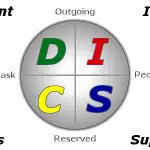As an Amazon Associate, I earn from qualifying purchases.
NAS COAL is an acronym for National Account Services Court Ordered Action Levy. You may see a NAS-COAL removed funds in your bank account. If you see this withdrawal, this means you have a lien, judgement, garnishment, or other legal order against you, legally allowing your bank to remove funds from your account and give it to whomever has filed the judgement, lien, or garnishment against you.
A judgement is when a collector or creditor has sued you and won over a debt which is outstanding. A judgement will state how much money you owe and is now your legal obligation to pay that debt back to the creditor. Any creditor with a borrower who owes them payment and has defaulted on their payments, can seek a judgement against the borrower. For example, if you defaulted on a loan, credit card, your taxes, or haven’t paid your EZ/Sun Pass or FasTrak bills, those creditors can seek a judgement from the court.
To get a judgement, your creditor must take you to court. If you ignore their notices, the court will rule in favor of your creditor and issue a judgement, indicating NOLO. NOLO is a no-contest plea – you haven’t officially or technically pleaded guilty, yet it is effectively a guilty plea. If you go to court and lose, the court will issue a judgement. In either scenario, that judgement is filed with the court and now public record. Public record means it will appear on your credit report.
To avoid a judgement, you should get in touch with your creditor and attempt to settle the payment with them prior to court action. Some creditors will settle for part of the debt, especially if you don’t have the wages or assets for them to collect the full amount. If they are unwilling to settle for part, and you can find a way to borrow from a friend or relative, this will help you avoid a judgement. If you borrow money, be sure to write an agreement with your friend or family member, so you don’t find yourself back in court with him/her. Whether you settle for all or part of the debt, always get final paperwork from your creditor stating you have satisfactorily paid your debt with them.
Once the judgement has been entered, your wages could be garnished, the creditor can place liens against your owned property, or they can even obtain levies against any of your assets. A levy is court order that could be used to authorize your bank to freeze and seize funds in your account. Levies can also authorize law enforcement to seize and sell your property, giving your creditor the proceeds. While there is a “statute of limitations” on judgements, which is generally 10-20 years, judgements can be renewed in most states. This means you should try to avoid judgements and resolve them as soon as you can.
If you don’t know of any judgements against you, but you see NAS-COAL removed funds in your account, you should appeal to whomever filed for the collection. Your bank will have the order on file. If you do not know of a judgement, request a copy of the order from your bank. A NAS-COAL removed funds is between you and whomever filed the paperwork. Your bank cannot help you, as they are following proper procedure by allowing the transaction. But be aware, banks generally charge fees on NAS-COAL – for paperwork, the levy itself, and if the NAS-COAL debits cause overdrafts on your account. Some of these fees can be substantial, and they can accumulate quickly if you don’t keep up with it. Worst case scenario would be an extended negative bank account causing your bank to file a lawsuit against you for that amount, further escalating your situation.
You may want to seek council with a consumer law attorney if a creditor threatens to garnish your wages or get a judgement against you. These threats can be illegal and it’s in your best interest to know if it is. You also should know your rights when dealing with a debt collector. Credit.com offers a list of the Top 10 Debt Collection RIghts.
You can also visit the Consumer FInancial Protection Bureau to find more information, tools, and resources to help you with your financial planning.
Amazon and the Amazon logo are trademarks of Amazon.com, Inc, or its affiliates.

